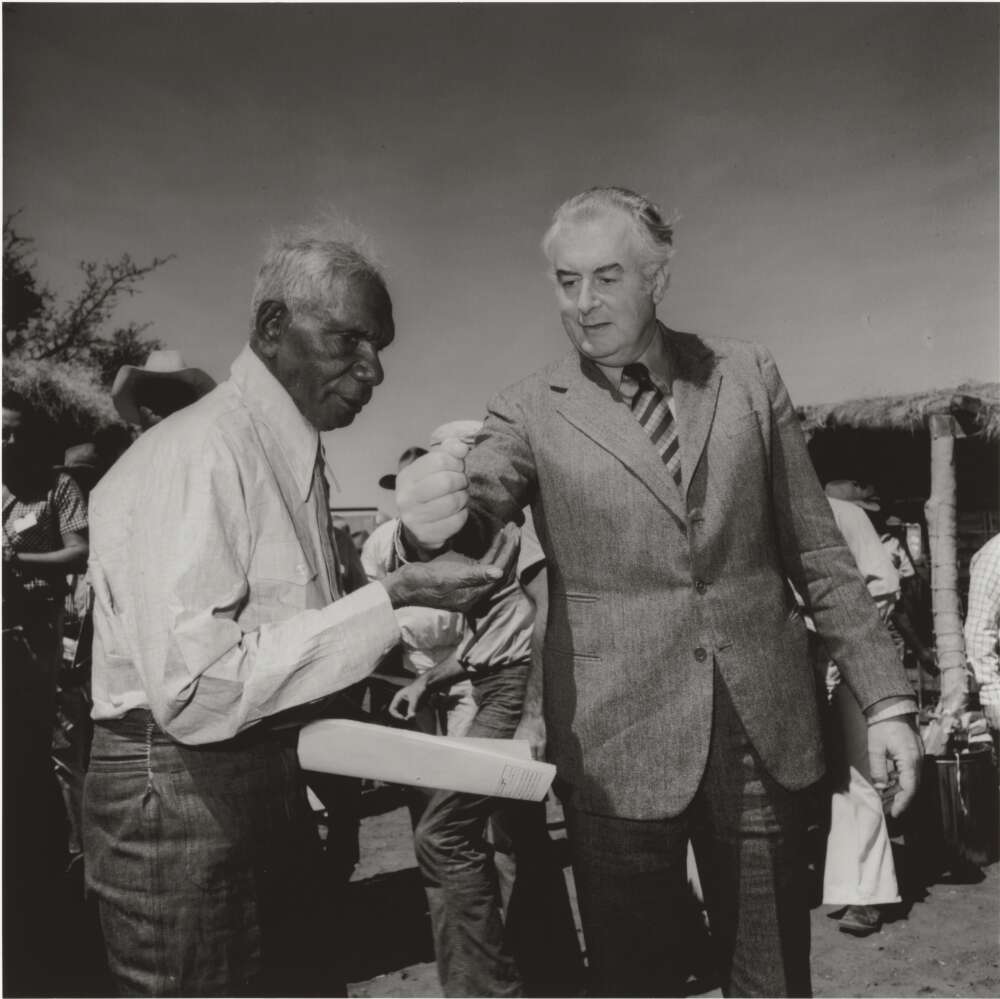Yesterday, August 15, was the 55th birthday of the National Library of Australia, which was opened in 1968 by Australian Prime Minister John Gorton. A Greek-styled monument, the birthday cake as it is affectionately known, was the first building opened along the banks of the recently completed Lake Burley Griffin.

I was procrastinating over the thesis in the Library a couple of months ago and I came across a scrapbook of press cuttings regarding the Library’s grand opening. One of the Librarians caught me and, enabling my procrastination, in a good way, suggested I pen a blog post for the Library’s 55th birthday, which I did.
The anecdote that did not get included, which I absolutely love, is the story of Hungarian-French artist and designer, Mathieu Matégot and the “grog” controversy. Canberra is no stranger to ‘grog controversies’, but I think this just pips the ‘Duke of Gloucester / Joseph Lyons’ anecdote at the post.
Mathieu Matégot took on the commission to create tapestries for the Library’s foyer. The Three Tapestries took two years to create and were placed in pride of place in the foyer. Arts correspondent for The Australian, Laurie Thomas thought the tapestries’ positioning was not to the advantage of the foyer or the visitor, “they too, are powerful”, though “splintered” and discombobulating when one “become[s] conscious, far too conscious, of things like sheep’s heads and pineapples”. (The Australian, 15 August 1968, page 9.)

However, the tapestries themselves were not the controversy of the day.
“A diplomatic row blew up today over a champagne party in the new National Library”, wrote Claudia Wright of Melbourne’s Herald. It appears that the French cultural attaché, Monsieur Henri Souillac, had organised a champagne reception in the foyer for Monsieur Matégot and his tapestries. However, the Library’s chairman, Sir Archibald Grenfell Price, decided “at the last minute” that the event would be “no liquor”.
“A champagne row”, led Melbourne’s The Sun report of the opening.
“Not today”, the French contingent were told as they arrived at the National Library with a car full of ice-cold French champagne, despite Monsieur Souillac’s exclamation, “it is for M. Matégot to meet the press”! (Courier Mail, ‘Honours to the French’, 16 August 1968.)
“You could call it a storm in a teacup – but it was really a champagne glass, and the champers was French.”
However, that did not stop the French from having a great opening, enjoying the formalities before moving their party to another venue in the capital where they could “pop, pop, pop” all night long.
A photograph of Matégot appeared in the Herald on 17 August with the caption: “French painter Mathieu Matégot downs a meat pie, [an Australian delicacy he loved], with champagne at his non-party before the opening.” As the saying sorta goes, ‘when life gives you lemons, make champagne and eat a meat pie’!

* Inspiration for champagne references is and always will be Edward Woodward’s version of Champagne Charlie, from his 1975 album, Edwardian Woodward, an Elliott Family favourite.

























